9 minutes to read
For many people, the chances of traveling to the Vatican Museums to see the Sistine Chapel and other works by Michelangelo, one of the renowned masters of the Italian Renaissance, are rare. The new exhibition at the MIS Experience – the second unit of the Museu da Imagem e do Som de São Paulo – is dedicated to bringing the experience of contemplation to the Sistine Chapel through technological resources.
Michelangelo: The Master of the Sistine Chapel it is the third exhibition of this facility, which has already held major exhibitions on the work of Leonardo da Vinci and Candido Portinari since its inauguration in 2019. The exhibition presents a panorama with certified replicas of sculptures by Michelangelo, in addition to reproductions of letters and paintings.
For the first time in Brazil, an immersive proposal also reflects the ceiling of the great hall, in addition to the four corners that are taken over by 19 projectors. Over more than 25 minutes of projections, visitors are surrounded by an artistic work produced by VJ Spetto and Leticia Pantoja. The projections not only reproduce the Sistine Chapel – which has its proportions respected, even though it is smaller in the MIS -, but also tell the main narratives painted by Michelangelo in the frescoes, with sound and visual resources that intensify each moment.
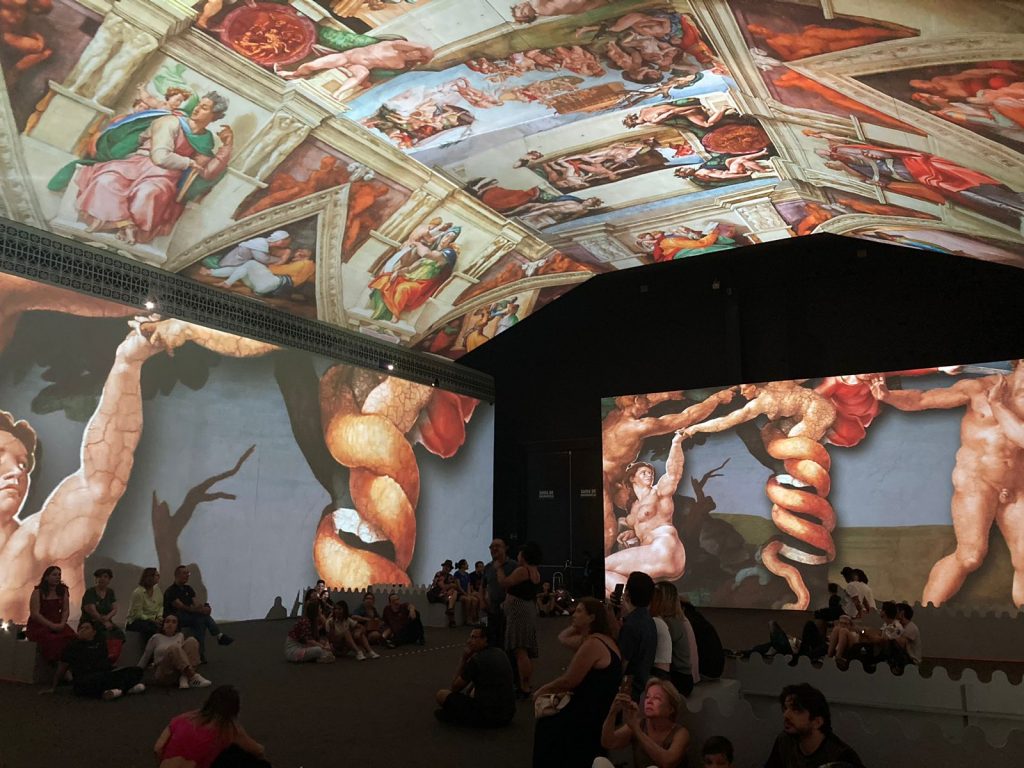
The History of the Sistine Chapel
Michelangelo recognized his closest approach to three-dimensional art from an early age, especially when he visited the Medici family’s sculpture garden, the greatest sponsor of art in the Renaissance. He specialized in sculptures and reliefs, producing impressive pieces for someone as young as The Battle of Centaurs e Madonna on the Stairs, around the age of 17. He did not, however, have the same confidence and interest in painting, despite the technique having been worked on at the beginning of his career as an apprentice to Domenico Ghirlandaio, a prominent master in Florence at the time.
In his 20s, he was already recognized as a notable artist, which made Pope Julius II entrust Michelangelo with the task of filling the ceiling of the Sistine Chapel with frescoes – a technique that involves painting on the mortar of the still wet wall. The building already had frescoes by other great artists of the time, such as Sandro Botticelli, Pietro Perugino and Domenico Ghirlandaio, who illustrated the life of Jesus and Moses on the sides.
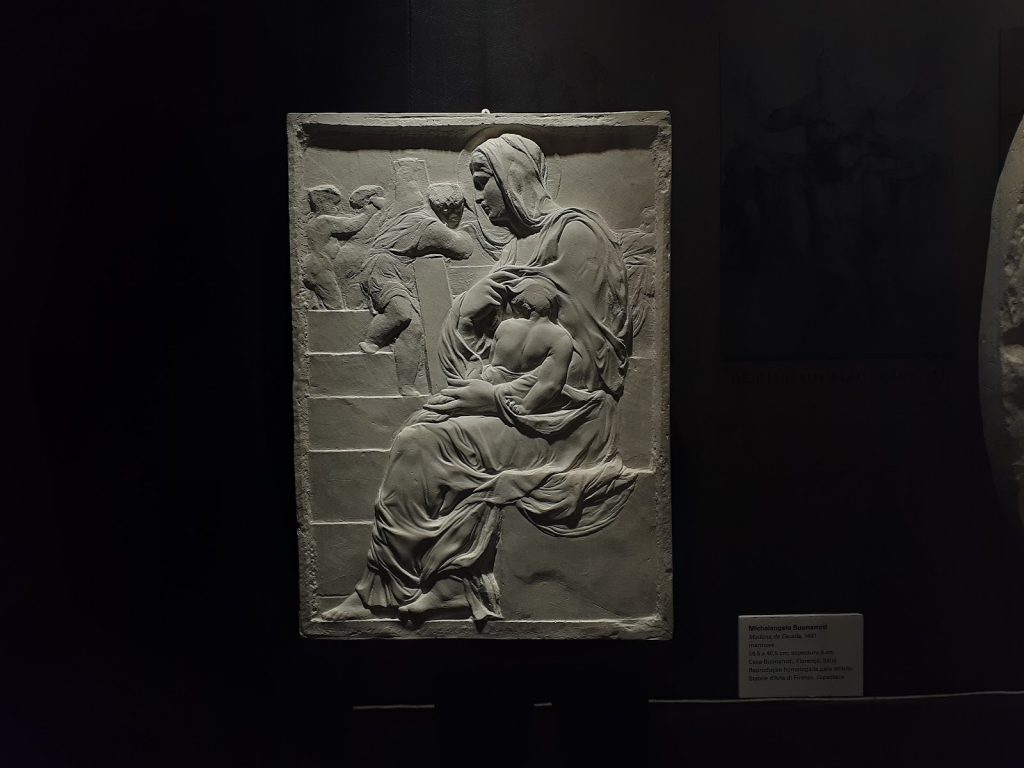

Having never carried out expressive works using the fresco technique, the artist believed that the Pope’s commission was a trap, since one of the religious leader’s advisers was Bramante, an architect with whom Michelangelo cultivated disagreements and who could wish for his failure.
Even though he tries to refuse the order when he doubts his own suitability for the job, Michelangelo accepts it after the Pope’s insistence. The themes present throughout the architecture’s ceiling extension are all chosen by the artist himself, who decided to portray the stories of the Old Testament.

The artist’s dedication to the ceiling of the chapel lasted about 4 years, from 1508 to 1512. In the MIS Experience exhibition, the public learns about this narrative throughout several rooms in detail, with the support of texts that identify each character.
The sides of the ceiling are occupied by biblical prophets and Sibyls, classical prophetesses incorporated into the Christian narrative through Greco-Roman influence. A runner names each of these characters and summarizes their story. The ancestors of Jesus that illustrate the side arches of the chapel, as an image support of the central story, are also presented in an exhibition room.
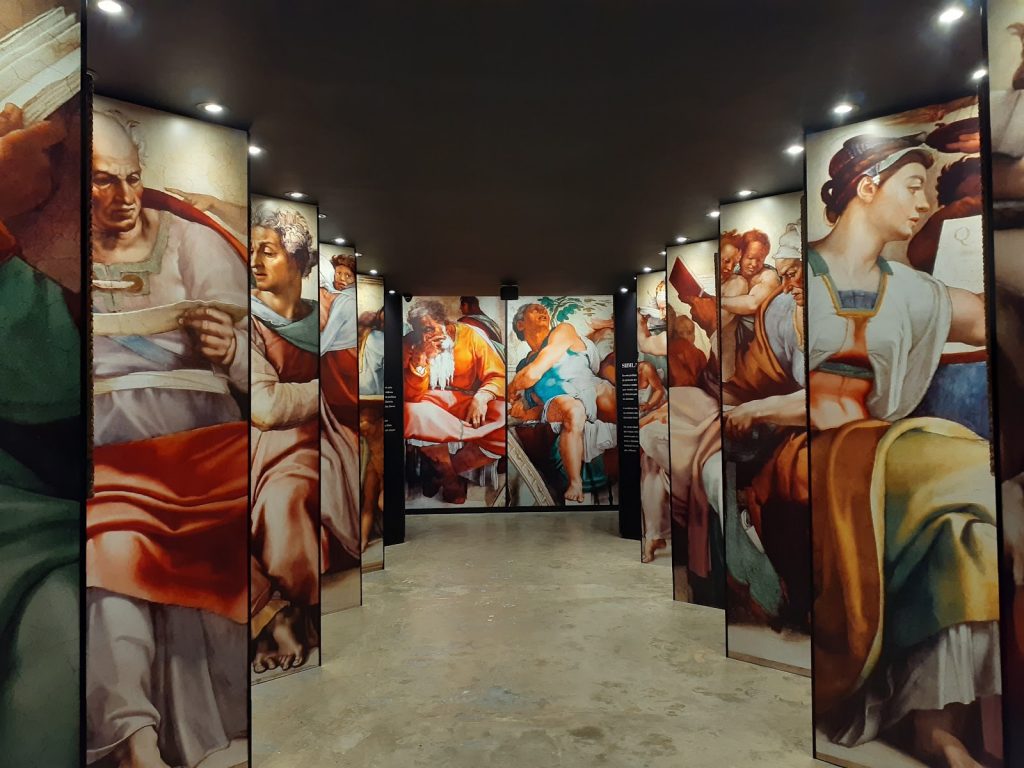

The divine acts that mark the book of Genesis and the creation of the world make up a room that presents moments such as the division of light and darkness. The enlargements of these passages allow a more attentive contemplation of the details and a more opportune reading.
One of the most awaited moments by the public is the Creation of Adam, one of Michelangelo’s frescoes that would be immortalized and popularized over the centuries. The hands of God and Adam that come together in a performative movement are highlighted in a room through sketches that show the evolution of the Italian master’s studies while architecting one of the most iconic scenes of Renaissance painting.


The creation of Eve, original sin and the expulsion of Adam and Eve from paradise are also detailed in this journey. Observing the images allows us to understand how Michelangelo chose to tell stories in painting. In the same composition, the artist represents the origin of sin and the result of this act. Adam and Eve’s appearance changes drastically from one corner of the scene to the other extreme, demarcating the effect of the expulsion on their bodies and faces. Without a doubt, the Italian master placed his greatest efforts on the human body as a maximum expression, while the landscape and other details were secondary.
Another important narrative arc for the Old Testament, told by countless artists throughout history, is the passage of Noah. Painted in 3 acts by Michelangelo, the scenes focus on different moments of one of the most famous stories in the bible. In one of the scenes, it is possible to notice the more elaborate use of perspective in a complex scene, with many characters divided into groups.

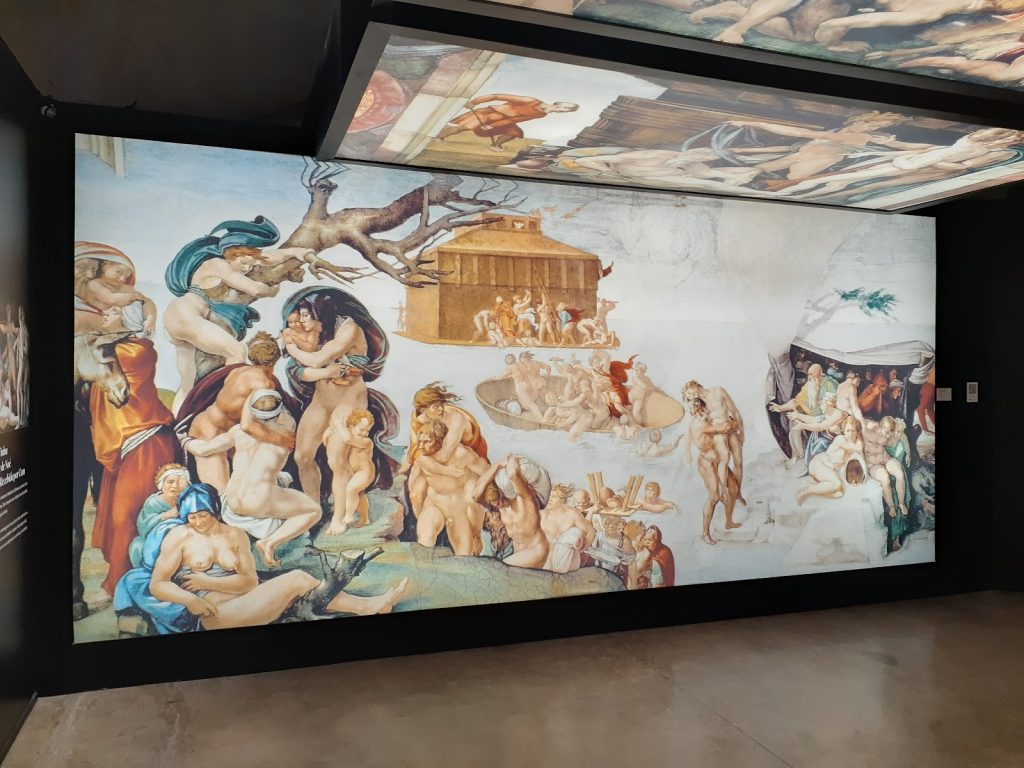
About 23 years after finishing the ceiling of the Sistine Chapel, Michelangelo returns to work on the building – now, to paint the altar. Between 1535 and 1541, the artist would bring to life his version of the Last Judgment, an excerpt from the bible in which it deals with divine judgment on all those who stepped on Earth, defining who would be worthy of paradise or who would be destined to pay for their sins in hell .
The composition of the fresco is pretentious, filled with numerous characters known from the bible, built within an aesthetic established by the artist throughout his career. The bodies – especially the male ones – are the key for the artist to design a great scene where each character fits in a continuous movement. In some way, everyone is affected by the central presence of Jesus who judges them. In the exhibition, the scene is fragmented into several frames, allowing a greater approximation with the characters.
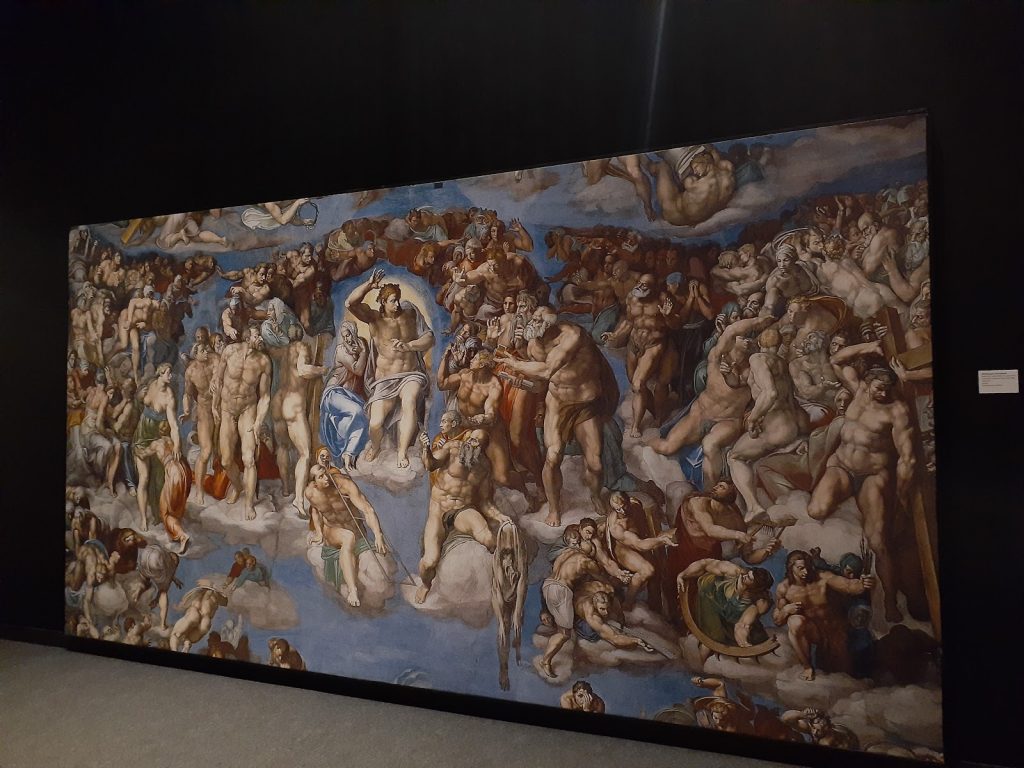
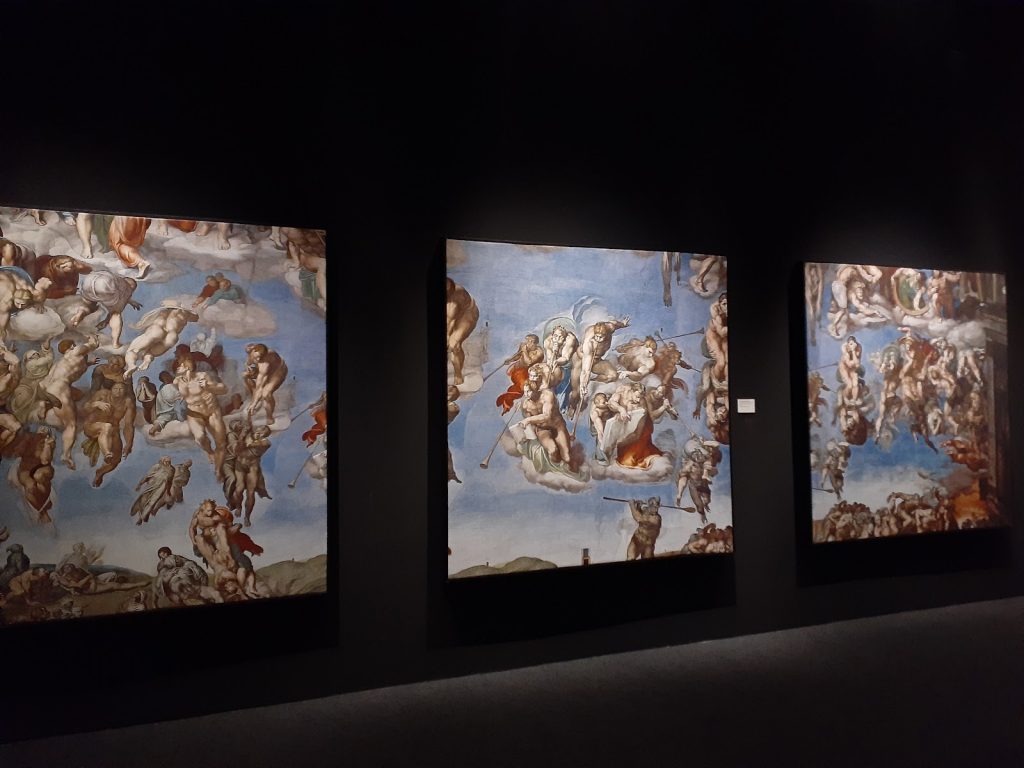
The sculpture on display
The exhibition begins and ends with the sculptures that enshrined Michelangelo. The first room, the Ateliê, brings together reproductions of works that are part of different moments in Michelangelo’s career. In this room there is a reproduction of Moses, a sculpture that was created by the artist for a mausoleum of Pope Julius II – never completed -, it is one of the most important pieces of his career.

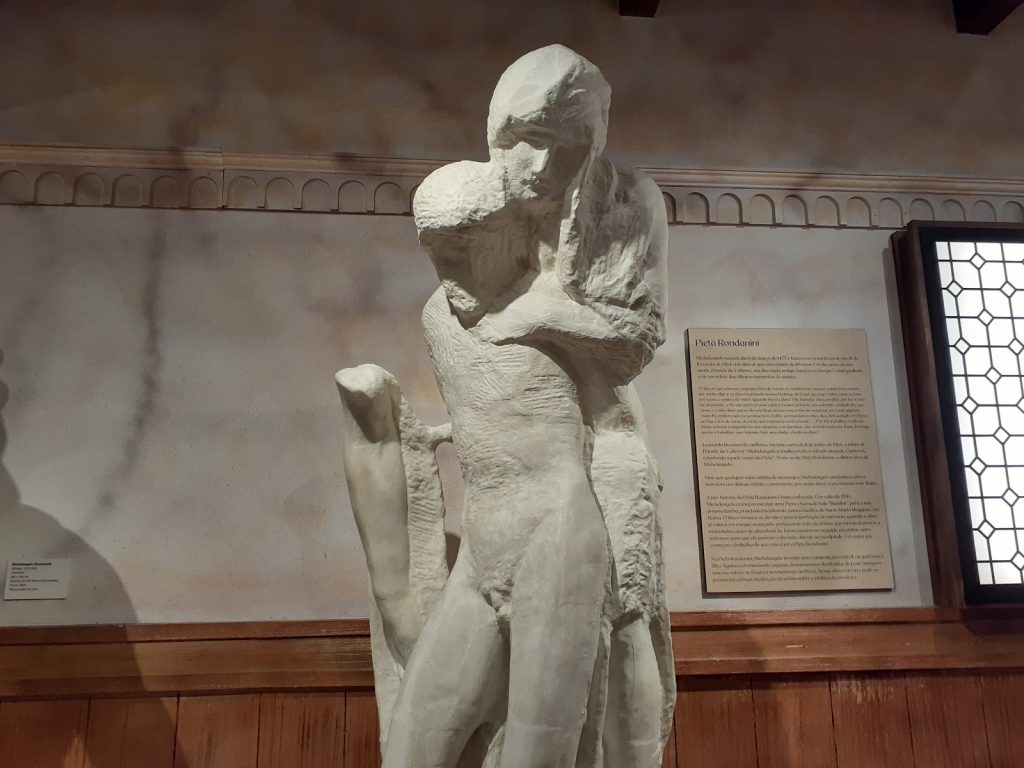
In addition to this, it is possible to see an approved reproduction of Pietá Rondanini, one of the last works worked on by Michelangelo at the end of his life. In it, it is possible to observe the artist’s process in unfinished parts, such as the upper part, and other more refined ones, such as the legs of Jesus.
The end is marked by a life-size reproduction of the imposing David, which would definitely mark the career of Michelangelo and Italian sculptural art. Michelangelo’s version of David is different from others that depicted him in action or in the glorious moment after defeating Goliath. In this sculpture of about 5 meters (without the pedestal), David is in a position of attention, waiting for the giant who would face him. The attentive look and virility of the figure sculpted by the artist would be the key to representing Florence in a period of many conflicts during the political instability that the region suffered.

The possibility of approaching a work as iconic as it is far from Brazilians is, in itself, a valid experience, especially in its educational nature. Michelangelo’s work is still, and will continue to be, basic material in the teaching of the arts. Although critical studies must be carried out, and this work deserves revisions, it is essential that there is the possibility of contact with this content and, without a doubt, technological exhibitions can be a good ally in this regard.
Diogo Barros is a curator, art educator and critic, graduated in Art History, Criticism and Curatorship at PUC SP.
Did you like this article? Read too:
The materiality of social dynamics through art: Cinthia Marcelle at MASP
Follow us and share our blog:
